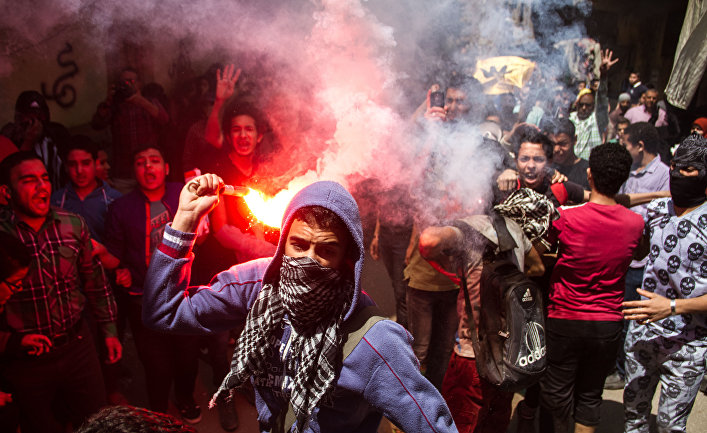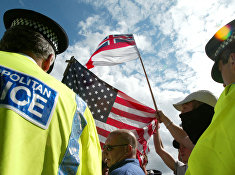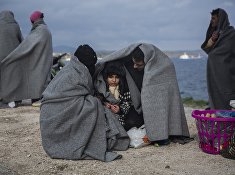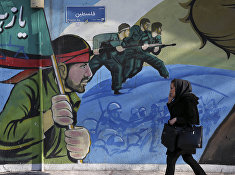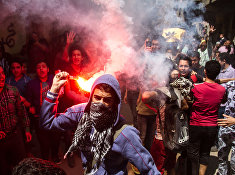In December 2015, Russian President Vladimir Putin put his signature to an important document – the 'Strategy For National Security'. One section of this paper is titled “Color Revolutions”. We can see clearly that the Russian leader apportioned a radically different evaluation to such revolutions to the way they are seen in the West, saying quite openly that they are “one of the gravest threats to Russia's national security”. He went on to call those behind such uprisings “radical movements which exploit extremist, nationalist and religious ideology alongside foreign and international NGOs, as well as private individuals to achieve their ends.”
We can only agree with this Russian assessment. Alfredo Macchi's book “Revolutioni S.p.a – Who Is Behind The Color Revolutions?” nails the matter perfectly. Macchi explains how such revolutions are set up — and critically names the western organizations which lit the fuse for the chaos in the Middle East. Let's start with the naming. Have you ever given any thought as to why the events in Tunis were named the “Jasmin Revolution”, while in Kyrgyzstan they were titled the “Tulip Revolution”, and in Georgia the “Rose Revolution”? Let's leave the Middle East for a second, and look instead at Belgrade. They're giving lessons there about how to run a good revolution – or, to use the newspeak of CANVAS – the Centre for Applied Nonviolent Action & Strategies – to provide the “essential tools for carrying revolution out”. As Alfredo Macchi's book explains, CANVAS was founded by one Sdrja Popovic, and became “the spirit of the Serbian Revolution of 2000”. It produced many activists who went on to feature in the events of the “Arab Spring” – such as, for example, Mohamed Adel, one of the ringleaders of the Egyptian Revolution of 2011.
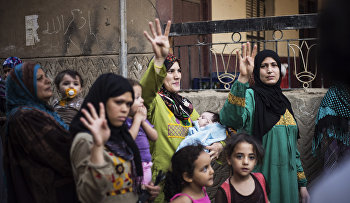
But who, actually, is Sdrja Popovic? While he was still a student, in 1998, he founded Otpor! (“Resist!” — Serbian)- one of the main movements which connived at the ouster of Slobodan Milosevic. As Macchi writes, “this student organization chose a clenched fist on a black background as its symbol, over which the word 'Resist!' ('Otpor!') is ironically displayed. The symbol led an innovative media campaign mounted against the Serbian leader Slobodan Milosevic, characterized by non-violent yet provocative gestures which enabled this small organization to play a leading role in the ouster of the dictator.” Popovic's bible in all this was a book by an American author, Gene Sharp, titled “From Dictatorship to Democracy”.
The events which occurred from that moment on are familiar to us all. NATO began bombing Serbia — Milosevic was hauled in front of a tribunal in The Hague, but was later found dead there. It was at this time that Otpor! made a major leap forwards into becoming a political party. To quote Macchi once again, “Popovich then managed to make his accumulated experience and ideology available for the ouster of other countries suffering from tyrants.” This was how CANVAS came into being – and went on to play a unique role in the revolutions in Georgia, Ukraine, and Lebanon… and throughout North Africa during the "Arab Spring".
'US aims to destroy all independently minded countries in Mideast' — https://t.co/t9V7duSu3u pic.twitter.com/dE6xPWJpHV
— popovici ionut (@popovici_ionut) January 16, 2016
However, there's much more to CANVAS than just merely organizing revolts. There's also the matter of the financing for them from overseas, plus all the data provided by a retired colonel in the US Army, by the name Robert L Helvey – or just 'Bob', as they like to say in the USA. Helvey is a member of the International Republic Institute, and is “a specialist in covert activities, and training military attachés at American Embassies overseas.” His name, and his presence, is written all over everything. He wrote a book called “The Strategy of Non-Violent Conflict – Thinking About The Fundamentals”. In practice, it's a handbook for overthrowing dictators, either real or imaginary. Yet the Otpor! outfit was not backed up by a retired colonel alone. Alongside him were links leading directly to the US Congress – such as the 'National Endowment for Democracy' (NED) – which in the year of 2000 alone contributed US$237,000 to Otpor!
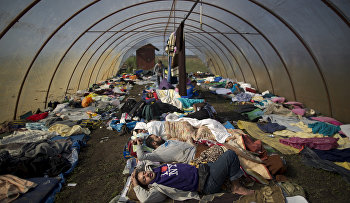
Yet the galaxy of pro-destabilizing forces extends far beyond organizations like CANVAS and Otpor! One very notable addition to these is the organization Freedom House (FH) – which turned its post-September-11 attention to the Middle East. It received “80% of its funding from the US House of Representatives along with the US Senate, through the National Endowment for Democracy – and the US State Department.”
According to Macchi, the National Endowment for Democracy provided the bulk of the funding that went to supporting and organizing the "Arab Spring". In 2010 – just a year before the widespread uprisings in the Middle East – the NED provided funding to organizations in Tunisia, Libya, Egypt, and Iran. One only has to go to the NED's own website to see for oneself where the money-trail leads – for example to the Syrians, “to raise awareness of the serious threats awaiting them.” Thus the revolutions of the Arab Spring were born – along with the chaos that followed them. Including Daesh.
